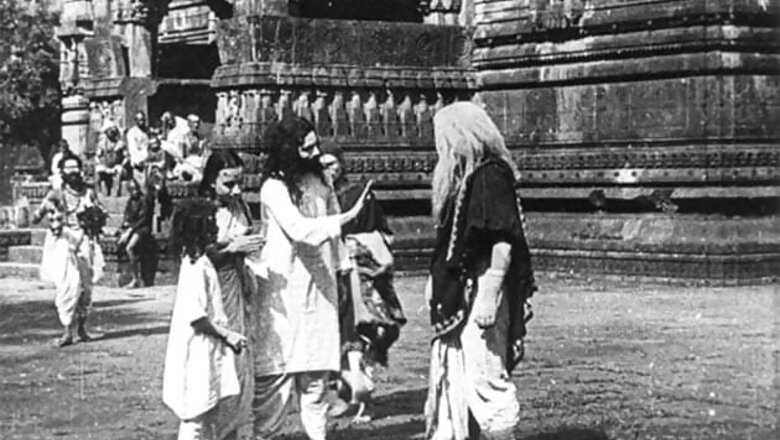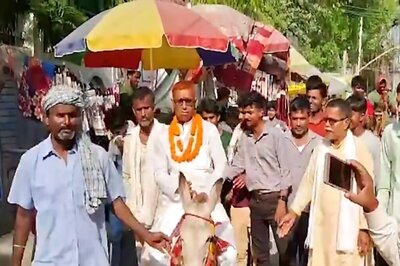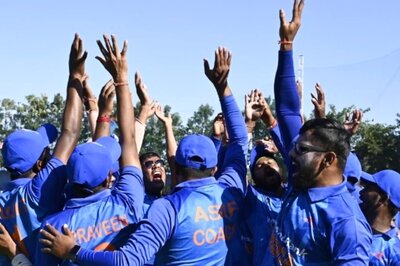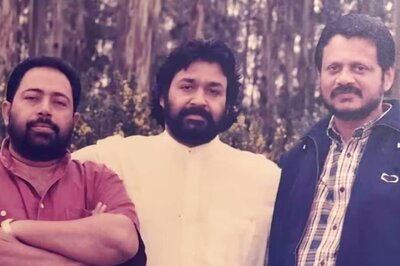
views
A lot has changed since the time the the first feature film, 'Raja Harishchandra' was released in Mumbai in 1913. Music, drama, powerful dialogues have become an integral part of cinema and has even permeated into our lives. The grandeur, the aplomb that we associate cinema to in present times is a stark contrast from how cinema was when it was initially introduced. As Indian cinema turns 100 years this year, we look at the initial phase of Indian films- silent films which gave emphasis to images and treated them as canvases.
Like most things in India, the origins and history of cinema in India is quite fascinating. Fascinating - because the origins of cinema started sometime in 1890s and not 1913 as it is popularly known now. Also, if one looks back, one can understand how the society and certain situations influenced the way the film industry works now - 100 years down the line.
The Luemiere brothers
The year was 1896 and Frenchmen - the Luemiere brothers came down to Bombay to showcase short films. For the European population as well as the Indians who were present at the screening, the concept of moving images was simply fascinating. Till then, photography was a known medium but films were still new. A year later, short films were also screened at the Victoria Public Hall in Madras by an European exhibitor.
Most of us know that Dadasaheb Phalke heralded feature films in India, but contrary to popular notions, he wasn't the first to make a silent film. HS Bhatavdekar popularly known as Save Dada, a photographer by profession was one the privileged few to have witnessed the films made by Luemiere brothers in 1896. Soon after, Bhatavdekar procured a movie camera from London and went on to document day-to-day events which eventually made for India's first silent short film in 1897.
The origins of India's three most prominent film industries can be traced to these years when European exhibitors showcased foreign films in Bombay (1896), Madras (1897) and Calcutta (1898). All these cities played an important part in forming the subsequent Marathi, Tamil and Bengali film industry which till date are flourishing. Soon after Save Dada, photographer Hiralal Sen also made his first film, 'A Dancing Scene' from the opera 'The Flower of Persia'. Sen, subsequently started his film company, Royal Bioscope Company with his brother, Motilal and went on to make forty films in his career.
By the late 1890s, short films had become a common feature and many photographers had experimented with medium. Most of these films were documentaries capturing events and some captured theatrical performances.
1913-1931
Heavily influenced after watching 'The Life of Christ', photographer and printing press owner Dhundiraj Govind Phalke wondered why weren't there Indian films based on the Hindu Mythology. Phalke started filming 'Raja Harishchandra' in 1912 which was commercially released in Bombay in 1913 and thus India got its first feature film.
'Raja Harishchandra' also was the first silent film which was screened in Coronation Cinema in Mumbai for the public. Till then films that were being made were viewed by only certain section of the society.
The first film starred an actor called DD Dabke, who went on to remake 'Raja Harishchandra' again in 1924. As the society was a closed and conservative one, women were not allowed to act and male actors played female chacaters in the film. Having worked with Raja Ravi Verma, Phalke was deeply influenced by the painter's style and incorporated the same style in his debut film.
The film narrated the story of the noble and righteous king, Harishchandra, who first sacrifices his kingdom, followed by his wife and eventually his children to honour his promise to the sage Vishwamitra.
Silent films in the South
Phalke's film heralded a new era. That of full length feature films. Around the same time, different filmmakers started experimenting with this new, fascinating medium and several silent films were made in various states. The Telugu film industry also made its foray into films in 1912 but the the film- 'Bhisma Pratighna' was released only in 1921. In Bengal, six years after 'Raja Harishchandra', Madan Theatre Company released its first silent film 'Billwamangal' in November 1919.
Most films stuck to mythology as its primary theme. Phalke's second film 'Lanka Dahan' (1917) was based on Ramayan and went on to become India's first box office hit. Films like Keechaka Vadham(1917), Shankuntala( 1920 ), Bhakt Vidur (1921) were all based on mythology.
Even though the films lacked diaoluges, the visual delight made the features captivating. The love stories that India films heavily bank upon now also had its origins in the silent era. The first love story was made by Dhiren Ganguly called 'Bilet Ferot' in 1921. By 1920s India was producing more than 27 films a year- a big number for that era.
Himanshu Rai
Himanshu Rai, who was a prominent filmmaker of the 1940s, also began his career by co-directing a silent film called 'Prem Sanyas' in 1925. Rai and Franz Osten shot the film in Lahore and Rai's wife Devika Rani played the lead role in the film.
By the late 1920s, filmmakers slowly started adapting novels for films and started steering away from mythology. Phalke produced and directed films till in the 1932 but eventually, as the talkies came into being, could not sustain himself in a changing industry and retired in Pune.
The first talkie
By the time the first talkie - Ardeshir Irani's 'Alam Ara' came in 1931, Indian audience was familiar with the concept of a feature film. Several theatres had been opened in various cities of the country and filmmakers were slowly introducing new stories. Irani perhaps understood the importance of sound in films and reportedly raced to finish the film. When the film was released in Mumbai's Majestic Cinema, the police had to be summoned to control the hysterical crowd who had come to watch the film.
While 'Alam Ara' brought a new change in the society it affected the careers of many filmmakers. Several pioneering filmmakers who were till then making silent films retired and faded into the oblivion with advent of the talkies as they could never cope with the changing times nor were they willing to understand the importance of sound in feature films.
####




















Comments
0 comment